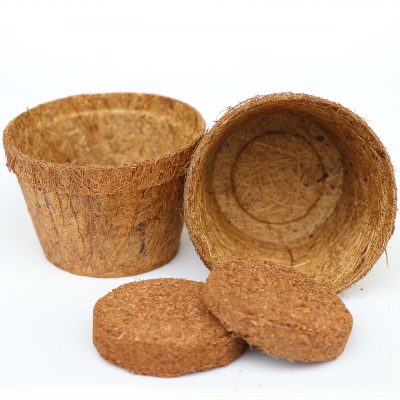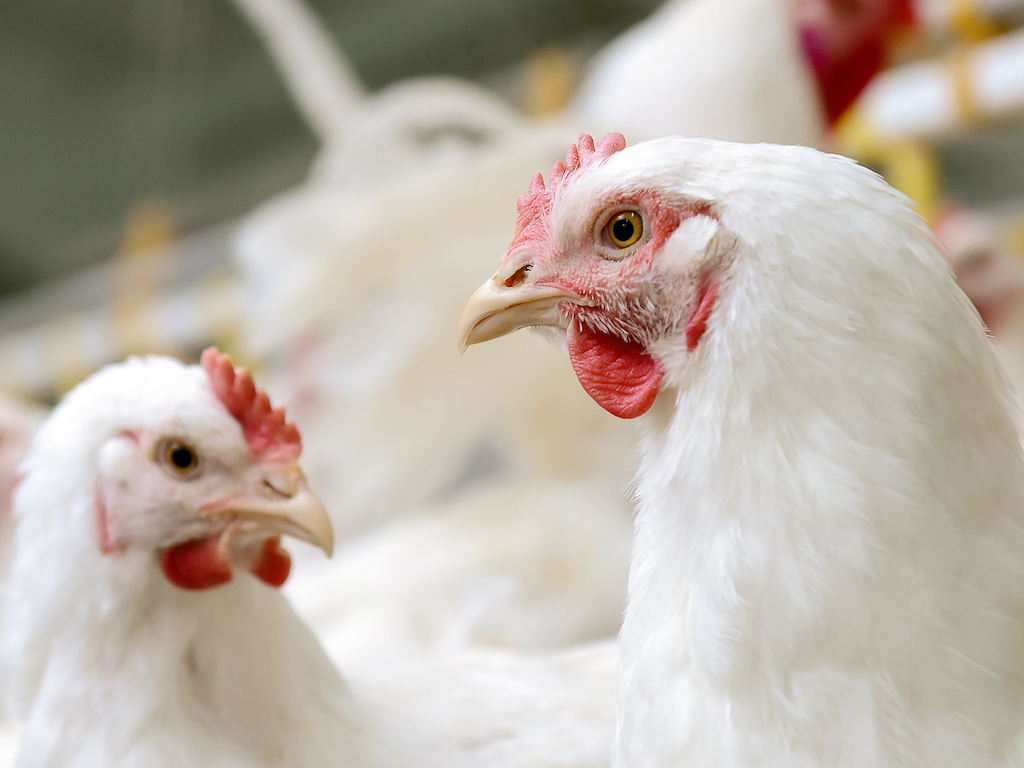No products in the cart.
What are Coir Pots ?
Day 27/04/2022
Coir pots are biodegradable planting containers made from the fibrous husk of the coconut. These soft, flexible pots are ideal for transplanting new plants as they can be placed directly in the ground. Coconut coir is an excellent growing medium in itself. Shaped into these convenient pots, the coir offers a wealth of benefits to your plants while streamlining your gardening activities.

How Are Coco Coir Pots Made?
The coconuts you see in the grocery store have already been stripped of their outer layer to expose the shell. However, when a coconut falls from the tree, it looks very different from the round, brown fruit that you’re accustomed to. The coconut features a thick fibrous husk encased in a green outer coating.
The fibrous husk has long been used to make rugs, ropes, bedding, and baskets. However, these products don’t use all of the husk. A collection of pithy dust and smaller coir fibers remain. These were once discarded but have recently found an important place in the gardening community. Gardeners can use loose coconut coir as a growing medium or soil amendment. The coir can also be shaped into pots.
To make these coco coir pots, the fibrous material is first washed and dried. This helps lower the salt content that’s often present due to the salty air and water in the tropical climates where coconuts grow. The clean fibers are then shaped into pots using molds. Some facilities use machinery to press the pots into shape, while others have dedicated workers shaping them by hand. Once shaped, the pots are carefully trimmed of excess fibers.
The Benefits of Coconut Husk Plant Pots
Coco coir pots are an excellent choice for gardening because this fibrous material offers many benefits to plants. These perks make coconut husk plant pots superior to many other options for starting new plants.
Permeability
Coconut fiber plant pots allow air, water, and even roots to permeate their shells. The coir holds water well, keeping your plants moist as they’re starting to emerge. However, the coir does not retain an excessive amount of moisture, so you don’t have to worry about drowning your plants. The coir makes aeration easy, allowing air through its permeable surface.
The roots of the plant can make their way through the coir pot easily as well. As the air and water are diffused through the pot’s material, the roots will begin to work their way through the pot. This creates an excellent environment for new plants because the roots can breathe, easily access water, and expand unfettered.
Biodegradability
Coco coir pots are completely biodegradable. They’re made exclusively from natural materials and will return easily to the earth once they break down. This means that you can quickly and easily drop these pots into the ground when you’re ready to transplant your plants to an outdoor garden or larger pots. This minimizes the trauma to the plant, allowing it to keep its root system intact.
Repotting or transplanting from pots that are not biodegradable can cause serious shock to your plants. You won’t have to worry about tangled roots or stunted growth when you’re working with pots made from coco coir.
Sustainability
Coco coir is a very sustainable material. A single coconut tree can produce 150 coconuts in a year. Coconut trees usually produce their first fruit when they’re 5 or 6 years old and reach maximum production after 15 to 20 years. The tree can live for 60 to 80 years in total. This makes it easy to produce numerous coir products without harming the environment. In fact, coconut trees even benefit the environment by reducing carbon dioxide emissions.
Nearly every part of the coconut tree is useful in some way, from the edible flesh and the nourishing oil to the medicinal flowers. This is an excellent tree to promote.
Nourishment
Coco coir has a neutral pH value that’s typically between 5.2 and 6.8. This makes it a versatile choice for plants of nearly any variety. The coir is also rich in nutrients like iron, potassium, copper, and zinc. Coir’s high cation exchange rate allows it to readily supply these nutrients to plants that it comes into contact with.

How to Use Coconut Fiber Pots in Gardening
Using your coconut fiber plant pots is easy and takes just a few basic steps:
- Place the pots in a tray where excess water can seep out.
- Add soil to the coir pots. Keep in mind that the pot itself has a neutral pH, so you will need to adjust the soil accordingly if your plants want an acidic or alkaline environment. Coco coir also tends to retain magnesium and calcium, so you may have to add more of these than usual, depending on your particular plant’s needs.
- Sow your seeds in the soil.
- Water the coir pots.
- Cover the tray to retain the moisture and create a humid environment for your plants to start growing.
- When your plants have sprouted and are prepared for the garden, place the coco coir pots directly in the ground. Alternately, you can place your coir pots inside other planters. Coconut coir is especially beneficial inside terra cotta. The coir helps retain moisture and counteract terra cotta’s tendency to leach it away.
If you’re interested in an eco-friendly way to approach your gardening, coconut husk planting pots are a great place to start. The nutrient-rich coir will help feed your plants generously while giving them the air and water they need to thrive. You may soon see enhanced results that are far beyond what you’ve experienced with other types of starter pots. When you’re ready to revitalize your garden, give coco coir pots a try.
Contact us for competitive quotation:
VIET NAM TECHNOLOGY MINERALS JSC – SHC GROUP
Mr. Leon Vu – Sales Executive
WhatsApp: +84 936 306 698
Email: export5@shcgroup.vn







